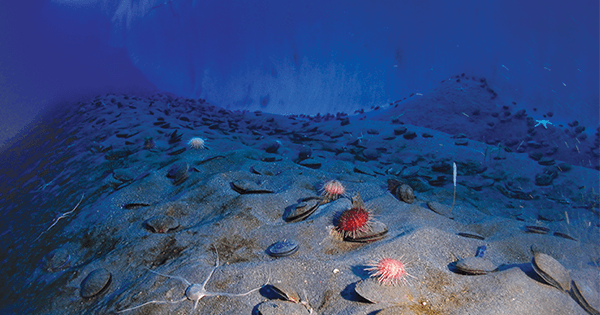
Some scientific research goes well beyond—and far deeper than—assessing data on a computer screen. To find out more about Antarctic ecosystems, researchers from Cal State’s Moss Landing Marine Laboratories drilled a hole in six-foot-thick ice and sent a lightweight camera dubbed SeeStar more than 600 feet down into frigid McMurdo Sound.
SeeStar can upload images from almost 5,000 feet below the surface; it was designed in 2011 at the Monterey Bay Research Institute (MBARI), which posted its plans on the web for other researchers to refine and use. This year Chad Kecy, an electrical engineer at MBARI, is working on the SeeStar III, a better camera with an optional sensor to record oceanographic data. Because of the SeeStar’s open-source nature, Kecy says, “researchers are free to modify their designs to meet their specific needs.”
Working with MBARI engineers, Moss Landing’s Stacy Kim, a research professor studying marine communities in Antarctica, last year fashioned two versions of the camera that could withstand two months of icy conditions.
“They performed marvelously,” she says, “proving that the engineering is suitable for use in -2° C waters around the Antarctic, and that they can be deployed—and, more importantly, recovered—through a solid ice platform.”
Kim’s team is still analyzing more than 9,000 images that reveal drastic differences between the sponge-dominated communities of two neighboring seamounts, indicating that Antarctic ecosystems are more dynamic and variable than generally believed.
So far, other versions of SeeStars have been used by various entities for researching squid life cycles, counting jellyfish, and documenting wear and tear on a buoy that uses wave motion to generate electrical power. Kecy says that MBARI is in contact with Norwegian, Canadian, and American scientists who are building their own SeeStar systems.
Kim is now applying for grants to keep a SeeStar under the ice for a full year, to learn what goes on in the winter darkness on the sea floor. “No one has ever done this before,” she says.

